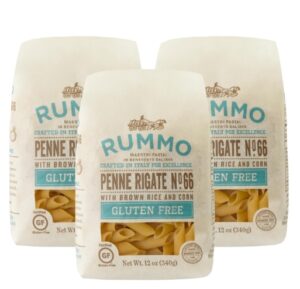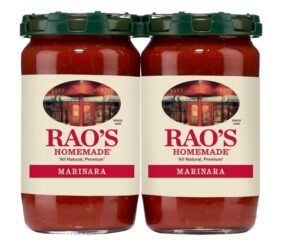Table of Contents
ToggleIntroduction
Finding a delicious and satisfying gluten-free pasta can feel like searching for a needle in a haystack. Whether you have celiac disease, gluten intolerance, or are just exploring gluten-free options, the market is brimming with options. In this article, we review some of the best gluten-free pasta brands to help you choose the perfect one for your pantry.
Criteria for Evaluation
We evaluated each brand based on:
- Taste: Flavor profile and authenticity compared to traditional wheat pasta.
- Texture: Firmness and chewiness after cooking.
- Ingredients: Simplicity, nutritional value, and allergen information.
- Cooking Performance: Ease of preparation and resilience to overcooking.
Is Pasta Gluten-Free?
Traditional pasta is not gluten-free, as it’s typically made from wheat, which contains gluten. Gluten free pasta (also referred to as GF pasta) is crafted from alternative flours like rice, quinoa, corn, or chickpeas, offering a safe and tasty option for those avoiding gluten.
What Noodles Are Gluten-Free?

Several types of gluten free noodles are available, including spaghetti, angel hair, rotini, and penne. Brands offer a variety of textures and flavors to suit every dish. For example, gluten-free spaghetti noodles and gluten-free angel hair pasta are ideal for light sauces, while gluten-free rotini works great in salads.
Is Gluten-Free Pasta Gummy?


Some gluten free pasta may feel gummy if overcooked or if the cooking instructions aren’t followed properly. Choosing high-quality brands like Rummo gluten-free pasta or Taste Republic gluten-free pasta can help achieve a perfect al dente texture.
Why Does Gluten-Free Mac and Cheese Feel Bad?


If your gluten-free mac and cheese doesn’t taste right, it’s often due to the pasta texture or a lack of rich flavor in the sauce. Opt for smoother and creamier sauces like Rao’s Homemade to elevate the experience.
Best Gluten-Free Pasta Options
Rummo Gluten-Free Pasta
- Renowned for its firm and authentic texture.
- Perfect for dishes requiring an al dente bite.

Banza Gluten-Free Pasta
- Made from chickpeas, offering high protein and fiber.
- A versatile choice for salads and baked dishes.

Barilla Gluten-Free Pasta Penne

- Affordable and widely available.
- Excellent for creamy sauces and casseroles.
Taste Republic Gluten-Free Pasta

- Fresh, refrigerated pasta with a premium feel.
- Ideal for gourmet meals.
Maidea Gluten-Free Pasta

- Organic and made with simple ingredients.
- Great for families seeking clean options.
Veggie Pasta Brands from Italy

- Italian brands like Coles Gluten-Free Pasta offer authentic veggie-based options.
- Perfect for creating traditional Italian recipes.
Top Gluten-Free Pasta Brands
Barilla Gluten-Free Pasta

- Ingredients: Corn and rice flour.
- Taste: Slightly nutty but mild flavor; pairs well with most sauces.
- Texture: Excellent al dente texture; doesn’t get mushy.
- Cooking Tips: Follow instructions carefully to avoid overcooking.
- Best For: Everyday use for dishes like spaghetti or mac and cheese.
Pros: Widely available, affordable, consistent quality.
Cons: Not certified organic.
Tinkyada Brown Rice Pasta

- Ingredients: Whole-grain brown rice.
- Taste: Subtle earthy flavor, great for heartier dishes.
- Texture: Holds its shape well but can get slightly sticky.
- Cooking Tips: Rinse after boiling to reduce stickiness.
- Best For: Casseroles and baked pasta dishes.
Pros: Whole-grain, high in fiber, family-friendly.
Cons: Longer cooking time compared to others.
Jovial Gluten-Free Pasta

- Ingredients: 100% organic brown rice.
- Taste: Neutral flavor; indistinguishable from traditional pasta when paired with sauces.
- Texture: Smooth and firm, holds up well even when reheated.
- Cooking Tips: Don’t overcook—remove from heat 1 minute early for a perfect bite.
- Best For: Sophisticated dishes like carbonara or Alfredo.
Pros: Certified organic, allergen-free, great flavor.
Cons: Pricier than most brands.
Banza Chickpea Pasta

- Ingredients: Chickpeas, tapioca, pea protein.
- Taste: Slightly nutty and unique; complements pesto and tomato-based sauces.
- Texture: Firmer and denser than traditional pasta.
- Cooking Tips: Stir frequently to prevent sticking.
- Best For: High-protein meals or quick dinners.
Pros: High protein and fiber, lower carb content.
Cons: Slightly grainy texture if overcooked.
Capello’s Almond Flour Pasta

- Ingredients: Almond flour, cage-free eggs, tapioca flour.
- Taste: Rich and slightly nutty, closer to fresh pasta than dried varieties.
- Texture: Soft yet firm, luxurious mouthfeel.
- Cooking Tips: Keep an eye on the cooking time—only a few minutes are needed.
- Best For: Gourmet pasta nights and special occasions.
Pros: Paleo-friendly, minimal ingredients, rich flavor.
Cons: Expensive, requires refrigeration.
Ancient Harvest Quinoa Pasta

- Ingredients: Organic corn and quinoa flour.
- Taste: Slightly sweet and nutty.
- Texture: Firm and less likely to break apart.
- Cooking Tips: Use a large pot of water to prevent clumping.
- Best For: Mediterranean-inspired recipes like pasta salads.
Pros: High in protein, certified organic, good value.
Cons: Slightly heavier texture.
FAQs
- Are noodles gluten-free?
Not all noodles are gluten free. Look for options made with rice, quinoa, or chickpea flour, like those from Barilla or Banza. - What gluten-free spaghetti sauce pairs well?
Rich tomato-based sauces like Rao’s Homemade or creamy Alfredo sauces complement gluten-free spaghetti perfectly. - Is gluten-friendly pasta the same as gluten-free?
No, gluten-friendly pasta may still contain traces of gluten, making it unsuitable for those with celiac disease. - Which gluten-free pasta is best for al dente?
Rummo Gluten-Free Pasta and Taste Republic Gluten-Free Pasta stand out for achieving a firm, al dente texture. - Where to buy gluten-free pasta?
Most major retailers, including Trader Joe’s, stock a variety of options like gluten-free trader joe’s pasta and Barilla penne. - Can gluten-free pasta be cooked al dente?
Yes, many gluten free pasta options, such as Rummo gluten-free pasta, can be cooked al dente. Follow the cooking instructions carefully and test for firmness before draining. - Does gluten-free pasta taste the same as regular pasta?
Gluten free pasta may have a slightly different taste depending on the ingredients used. High-quality brands like Taste Republic and Barilla offer flavors close to traditional pasta. - Is gluten-free pasta healthier than regular pasta?
Not necessarily. Gluten free pasta is beneficial for those with gluten intolerance or celiac disease, but its nutritional value depends on the ingredients. Options like Banza gluten-free pasta are high in protein and fiber. - Can I use gluten-free spaghetti for classic recipes?
Absolutely! Gluten-free spaghetti pairs well with classic sauces like marinara, Alfredo, or Rao’s Homemade spaghetti sauce. It works beautifully in traditional recipes. - How do I keep gluten-free pasta from sticking?
Cook gluten free pasta in plenty of boiling water, stir occasionally, and rinse with warm water after draining to prevent sticking. Adding a bit of oil can also help
Conclusion
Choosing the right gluten free pasta can transform your meals. Brands like Rummo, Banza, and Barilla offer flavorful and high-quality options for all types of dishes. Whether you’re craving gluten-free spaghetti noodles, rotini, or penne, the perfect gluten-free alternative is out there. Experiment with sauces and explore Italian veggie-based brands to elevate your pasta game!
You can also check:Ultimate Gluten-Free Diet Plan: To Transform Your Health




